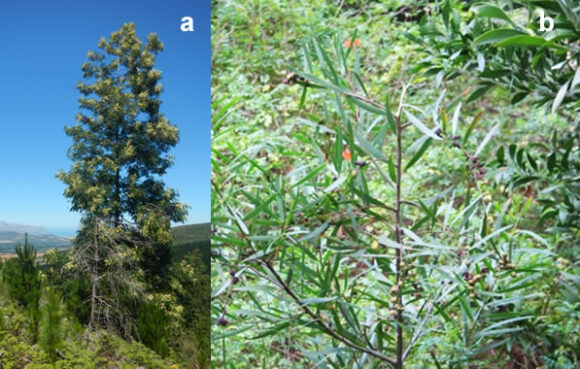The new approach of ‘sustainable intensification’ in the livestock industry aims to increase food production from existing farmland while minimising pressure on the environment. While beneficial in many respects, this approach poses a major environmental risk, since many newly developed pasture plants pose a high risk of becoming invasive.
According to research published in Proceedings of the National Academy of Sciences of the USA on 3 November 2014, livestock production is already the largest user of land on earth, accounting for 30% of the world’s land area. Growing demand means that production must rise more than 50% by 2050 as global human population and per capita consumption increase.
In response to this demand, agribusiness is developing new pasture plants to increase productivity, grow faster, produce more seeds and tolerate environmental extremes.
“The problem is that in making these pasture varieties more robust, they are more prone to becoming a problem for the environment. New varieties can invade adjacent areas and spread across the landscape, or they can interbreed with existing invasive weeds,” says Professor Don Driscoll from the Fenner School of Environment and Society at Australian National University in Canberra who is lead author on the article. “New pasture plants intensify invasive species risk” he says.
Using data from eight countries on six continents, the authors show that few governments regulate conventionally bred pasture plants to limit threats to natural areas. However, most of these pasture plants pose a substantial weed risk.
In Australia, for example, gamba grass (Andropogon gayanus) was introduced from Africa in the 1980s as it potentially supports 40 times more cattle than native species. The rate of spread of gamba grass in Australia is now among the highest of any invasive plant in the world. Growing up to four metres tall, this aggressive invader has increased the cost of fire management from less than AUD$2 000 for each fire to as much as AUD$43 000 per fire.
South Africa is fortunate to currently have few problematic pasture species. However, a number of species cultivated here are problematic elsewhere in the world and are also sometimes agricultural weeds. In South Africa, 22 pasture species are prohibited in the regulations for the National Environmental Management: Biodiversity Act (NEMBA). NEMBA also provides for weed risk assessment as a cost-effective biosecurity measure. However, at a subspecies level, there are few barriers to importing new taxa of permitted pasture species.
Professor Dave Richardson, Director of the Centre for Invasion Biology at Stellenbosch University and a co-author of the study, says that South Africa’s legislation for invasive species is among the best in the world: “To a large extent we have foreseen this problem, but our laws are by no means perfect. This study serves as a wake-up call that we need to fine-tune our legislation and make sure that such laws can effectively address the problem. Importantly, the legislation regulates species, but does not regulate the development or importation of new varieties of species that already occur in South Africa”.
The rest of Africa, however, faces a huge risk regarding the importation of species for different forms of agriculture.
Professor Richardson says there is little or no legislation in other parts of Africa regarding the import or development of new plants for agriculture: “Many aid agencies are under pressure to increase agricultural productivity in Africa, but there are no regulations for controlling which species they introduce. In East Africa, for example, aid agencies continue to promote the use of well-known invasive trees such as Prosopis species for agroforestry. In 2004 Prosopis was listed among the world’s worst 100 invasive species.”
Initially planted to provide fuel wood, Prosopis forms dense, impenetrable thickets. Millions of hectares of rangeland have been effectively rendered unusable due to this. It also suppresses the germination and growth of crops, weeds and other trees.

The authors of the PNAS paper recommend four approaches that governments could consider to limit the risk of new invasions:
- Develop a national list of pasture species and varieties that are prohibited based on the risks they pose to the environment;
- Formal weed risk assessment for all new pasture species, including new varieties of species already present in a country;
- A program to rapidly detect and control new taxa that invade natural areas;
- The implementation of a polluter-pays principle, so that if a newly-introduced pasture plant becomes an environmental weed, industry pays for its management.
For more information contact Dave Richardson at rich@sun.ac.za
Featured as a “Research Highlight” in Nature
Watch a video titled Feed or Weed? New Pastures Sow Future Problems



